The Project
The sulphide nickel and copper deposit at Kevitsa was first discovered in 1987 and is one of the largest mineral discoveries in Finland. In 2008 Canadian mining and metals company First Quantum Minerals Ltd (FQML), now Boliden, gained the rights to the deposit. In 2009 to 2010, FQML conducted a comprehensive drilling campaign that greatly expanded the resource and improved the confidence to start mining in 2012.
In 2013 FQML made the strategic decision to introduce 3D geological modelling software, Leapfrog Geo, to all of their exploration offices, including the Kevitsa mine. Already users of REFLEX ioGAS, geologists were able to quickly benefit from the ioGAS Link, which seamlessly connected the two leading software programmes.
Olympus Portable X-ray Fluorescence (pXRF) Analyzers are also extensively used by FQML exploration and mining geologists allowing early geochemical interpretation of geological samples in the field. At Kevitsa, the need to improve the geological model to optimise mining and to generate further exploration targets drove a program to acquire lithogeochemical data that could be fed into a 3D model for proper correlation and rapid visualisation.
This integration of ready-to-use data with existing interpretations allowed geologists to make timely decisions and effective use of the very latest information.
Situation
Being able to easily combine multi-disciplinary data is a growing requirement and recognised by many industry pundits as the next challenge and trend in the management of information in mining. Vast amounts of data are increasingly available, yet cross over between software packages doesn’t always facilitate easy use, effective integration and collaboration.
A huge range of geochemical information can be gathered during exploration, mine development, and mine operation. Not incorporating this data into a geological model exposes organisations to risk.
The ioGAS Link was introduced to enable users of REFLEX ioGAS and Leapfrog Geo to work seamlessly between the two programmes and share data instantly.
“The integration of ready-use data with existing interpretations allowed geologists to make timely decisions and effective use of the very latest information”
Combining the unique and superior benefits of two leading solutions, the ioGAS Link allows geochemical data to be rapidly interrogated, incorporated and transferred between programmes. Users are able to rapidly visualise geological and geochemical data and instantly verify spatial correlations. This powerful information allows for the real-time construction or modification of 3D interpolants (models).
Response
The Kevitsa project is located in northern Finland, 120 km north of the Arctic Circle and is a large open pit Ni-Cu-Pt-Pd mine. The Kevitsa ultramafic intrusion is one of several in the region that host this type of mineralisation elsewhere. Prior to acquisition by FQML nearly 20 years worth of drilling and geological data was produced. This data could be interrogated and used to target further drilling to increase the confidence level of previous resource models.
In the continued exploration effort at Kevitsa, the ioGAS Link allowed geologists to rapidly interrogate geochemical data to improve interpretations. REFLEX ioGAS has specific data validation and leveling tools that are key to interpreting multi-generation data. Says former FQML Geologist, Frank Santaguida, “We were able to recognise specific rock types that were associated with mineralisation. We analysed some of these rocks and were able to geochemically fingerprint them. Analysing the historic drillcore and new exploration core we could then plot the new data to target new areas for mineralisation.”
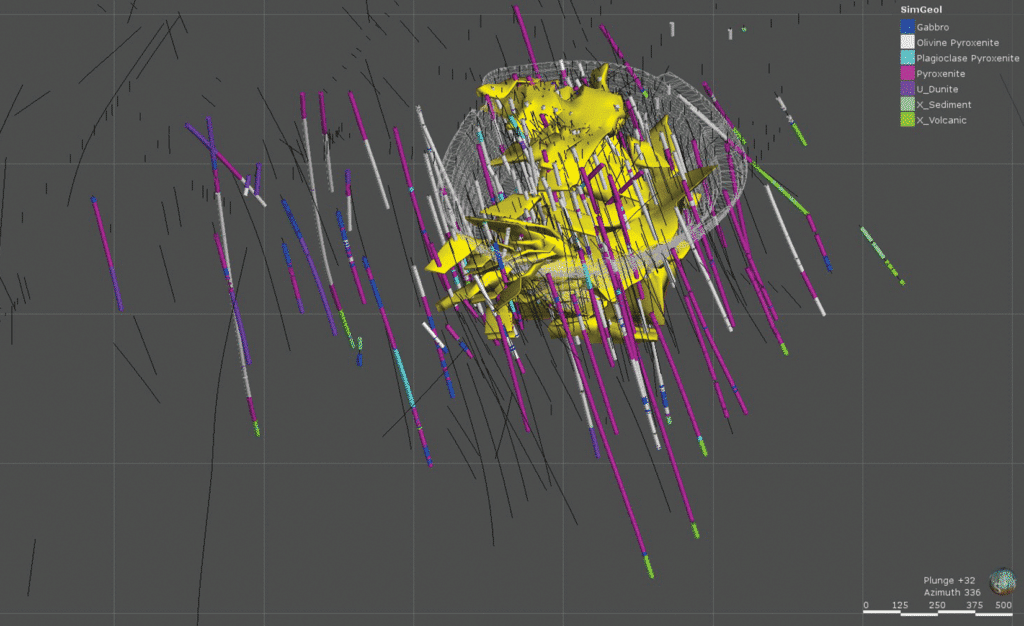
In 2011, FQML published a Ni-Cu-Pt-Pd resource based on over 60km of diamond drilling (resource solids shown in yellow). Through a series of re-logging campaigns of selected drill holes, a consistent lithological coding system was devised connecting mineralisation with a specific sequence of olivine- and plagioclasebearing pyroxenite rocks.
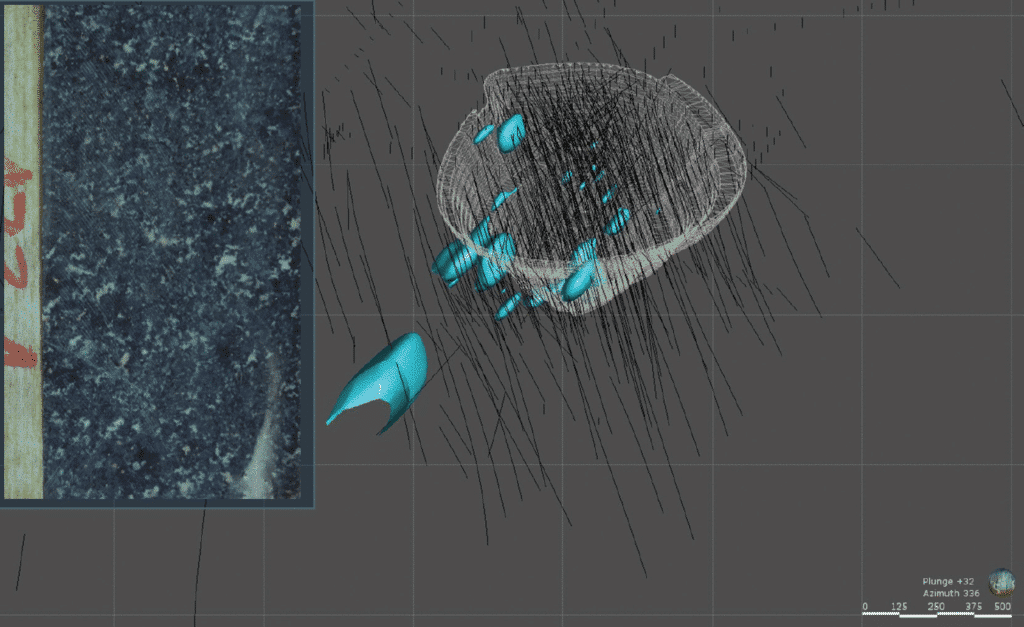
The olivine and plagioclase-bearing pyroxenite unit identified by corelogging is a marker horizon within the ultramafic intrusion (modelled in blue). Discrete layers are discontinuous making recognition of this sequence difficult and thereby complicating exploration for further mineralisation.
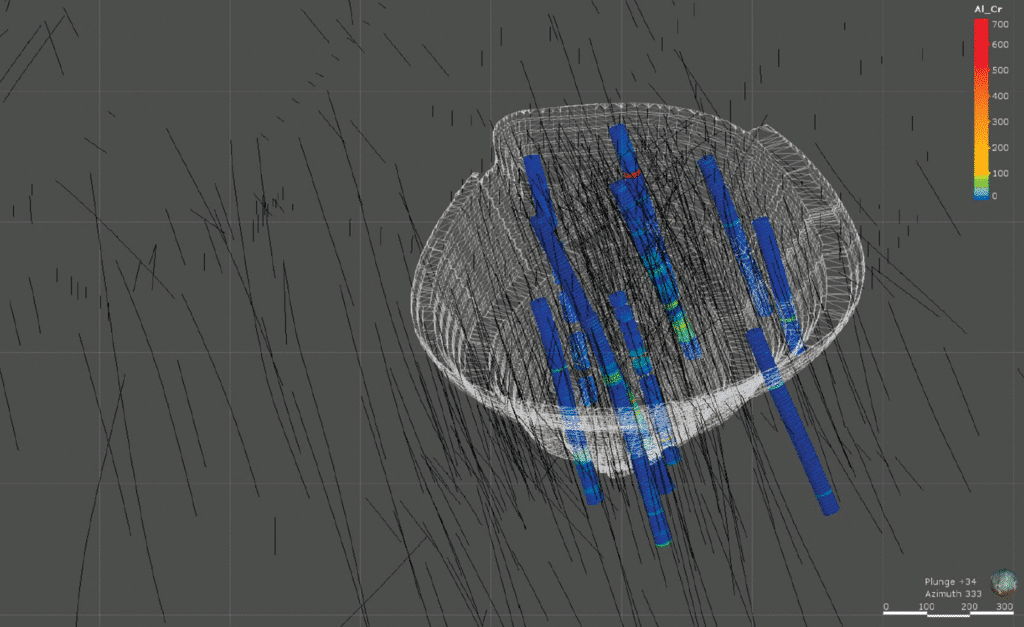
To refine the logged rock types, multi-element geochemical data were collected from an analytical lab. The olivine and plagioclase pyroxenite was distinguishable due to high Al-Cr ratios as shown in the down-hole plots in the above figure.
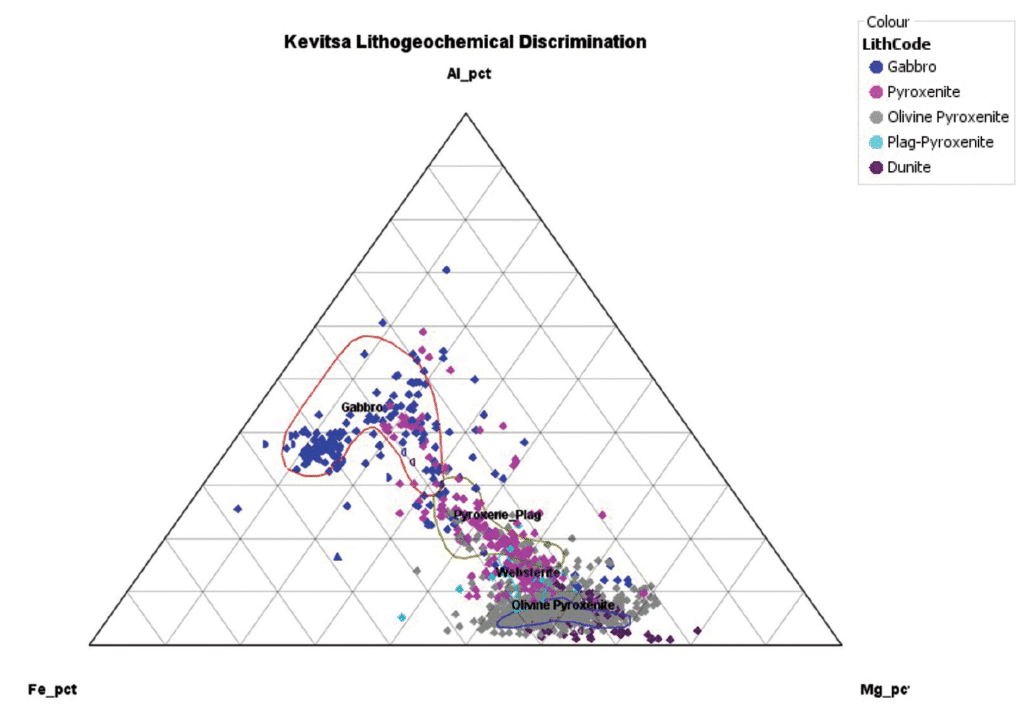
Further classification of the rocks was carried out and groups were assigned utilising analytical and interpretation tools within ioGAS. The custom diagram provides a template to be used for future data with samples rapidly allocated to the interpreted lithology.
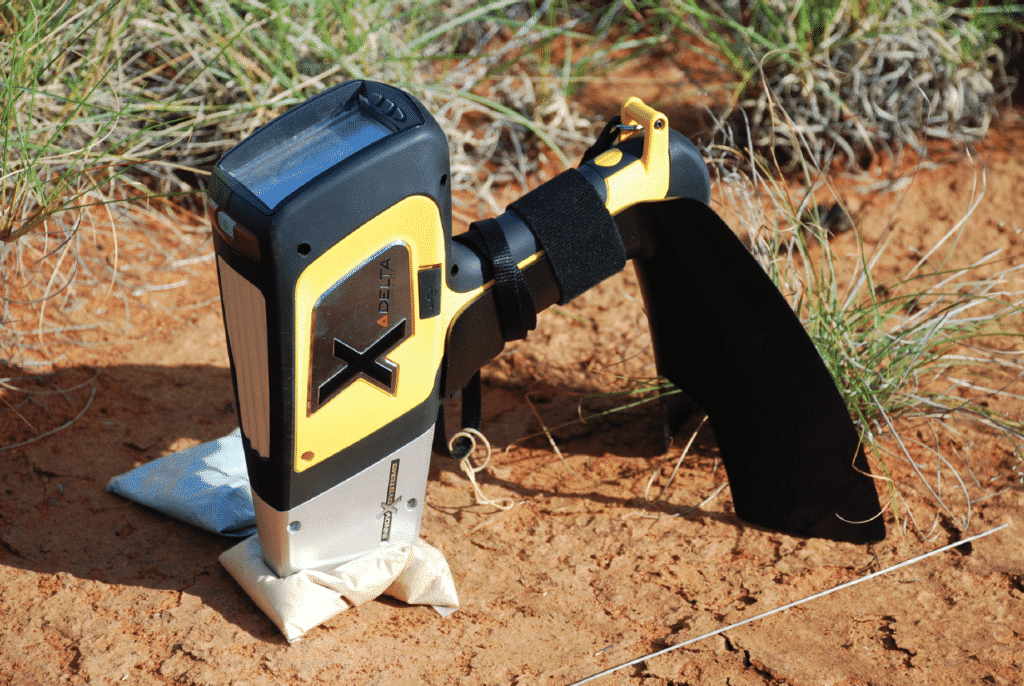
To avoid having to re-log several kilometres of drillcore, Kevista geologists utilized Olympus pXRF Analysers to obtain geochemical data rapidly. The pXRF can be operated on site, at the user’s own pace, and the number of analyses quickly modified to meet the needs of the level of interpretation required. Results from the pXRF Analyser are immediate obviating the need to send samples off for laboratory testing, which can lead to delays of weeks to months.
Says Frank, “The Analyzer meant we could improve on the geology as well as the economic parameters and we didn’t need to devote the time and money to sending samples offsite. The data generated by the Olympus pXRF Analyzer was then readily incorporated into the geological model and we were able to decide then and there if more data was needed.”
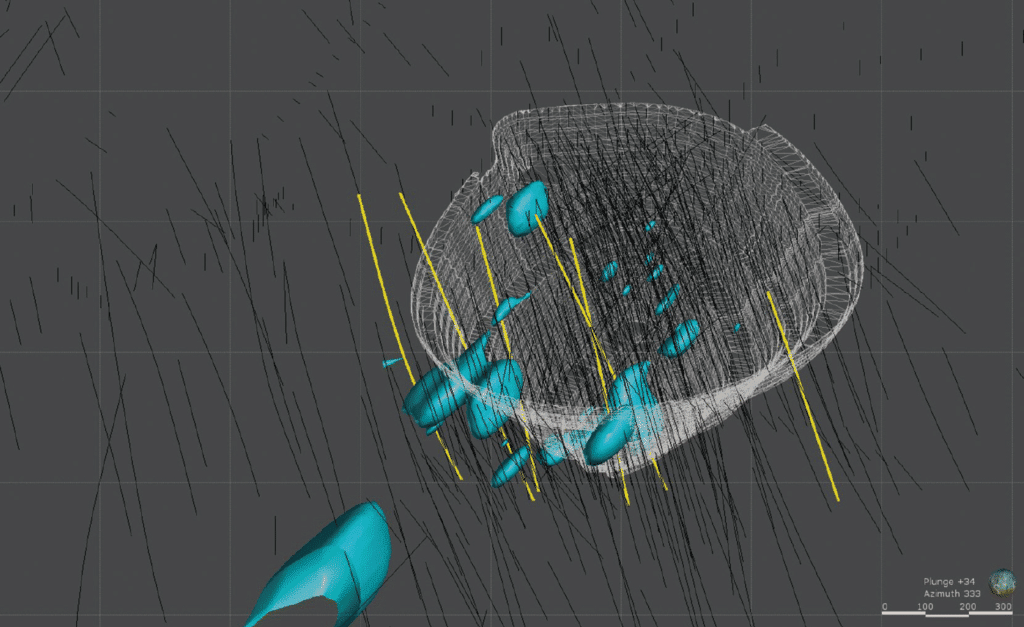
Pulp samples from six diamond drillholes were analysed using an Olympus pXRF instrument to test for the presence of the mineralised sequence.
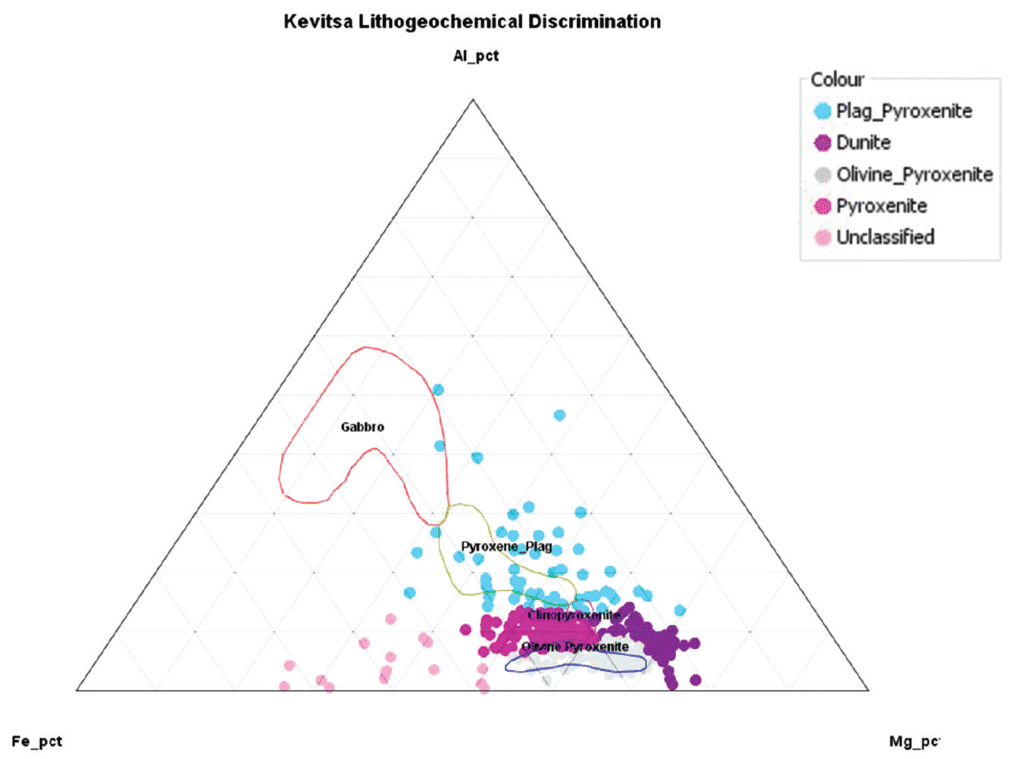
The pXRF data were calibrated and the Kevitsa rock classification scheme was applied to newly acquired data in ioGAS.
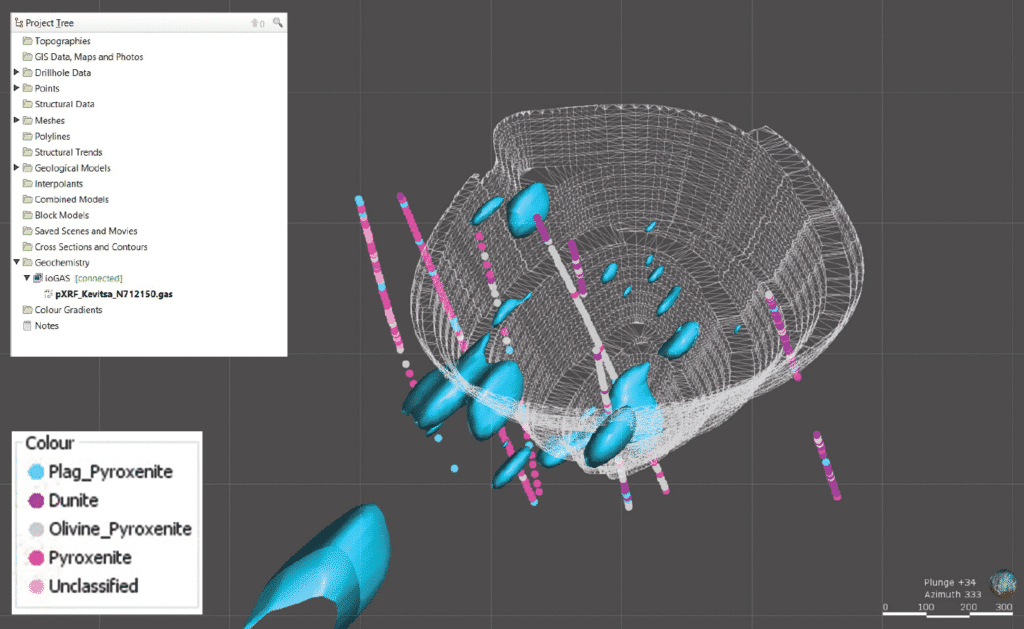
Data collection was completed in 10 days and visualised ’live’ to determine if sample spacing (selected to be 5m) was adequate to detect the olivine and plagioclase-bearing unit. The data shows that the olivine and plagioclase bearing unit is prominent within the mineralised area (illustrated by the open pit outline).
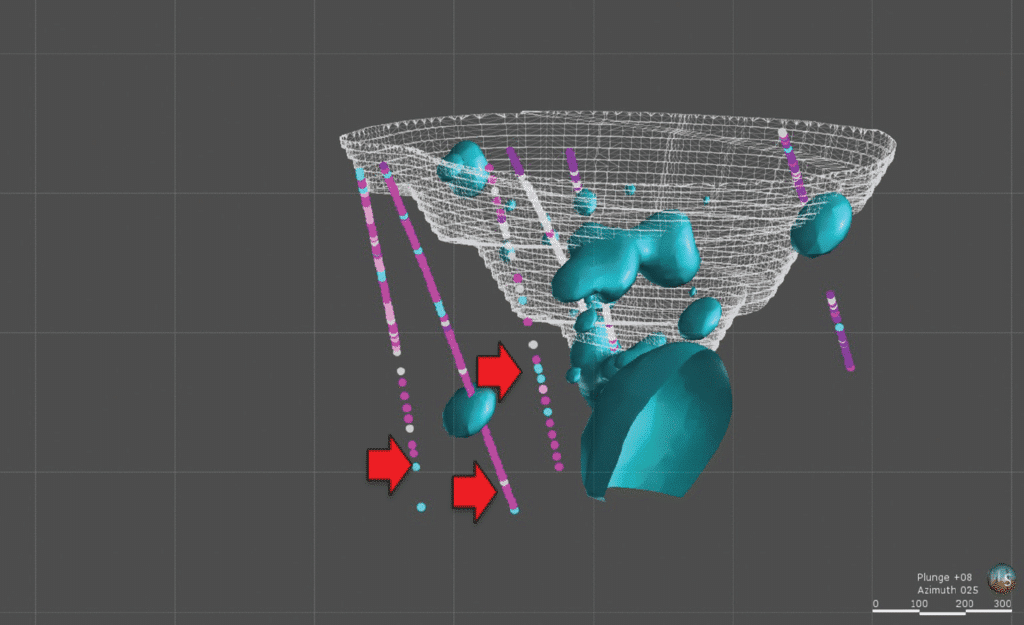
Closer inspection showed thin olivine and plagioclase-bearing dykes were missed in the original logging (red arrows) suggesting the mineralised sequence extends to depth and has been undrilled thus providing for future exploration targeting.
The ioGAS Link allowed for new geochemical interpretations of the Olympus pXRF data used to quickly re-evaluate the geological model created in Leapfrog.
David Lawie, Global Product Manager at REFLEX, says “the link between ioGAS and Leapfrog Geo gives the modeler access to a powerful analytics engine underpinned by robust applied statistics and advanced multivariate data visualization tools that enable consistent, quantitative domaining of geoscience data for more robust geological models. Mineral compositions can be estimated, alteration zones determined and geometallurgical parameters calculated in ioGAS then dynamically interpolated in Leapfrog Geo. The link provides integrated workflows to improve productivity and reduce risk in the whole mine lifecycle gaining significant value at little cost.”
Outcome
Use of the ioGAS Link at Kevitsa allowed FQML to easily incorporate geochemical data into their geological modelling for more robust results. Automated multivariate outlier detection in ioGAS facilitates interrogation of the 3D geological model for rapid domain assessment with new geochemical interpretations being quickly available to re-evaluate the geological model in Leapfrog Geo.
Continues Frank, “The chemical information gave us much more to go on and seeing it in 3D is very revealing. The ioGAS Link has been very valuable. We can see another dimension, another level of compositional detail, enabling us to better understand geology, to be better miners. It also means we can go about answering the all-important question ‘is there more’?
The ioGAS Link is part of the Leapfrog Partnership Programme, which aims to deliver seamless interoperability between leading software providers for superior modelling and more effective decision making. Existing partners include REFLEX, acQuire, Corescan and Deswik.
The ioGAS Link and other partnerships allow Leapfrog Geo users to draw appropriately from multiple disciplines to redefine problems outside normal boundaries and reach solutions based on a new understanding in complex situations.
Says Shaun Maloney, Chief Executive Officer, ARANZ Geo Limited, “The use of the ioGAS Link at Kevitsa is a great example of the benefits of integration with other software. This is essential as dynamic modelling becomes the norm and the amount of data increases. The link offers users of Leapfrog Geo and ioGAS real benefits, not least being able to readily access and visualise a huge range of geochemical data, but to rapidly include it in the modelling process. In fact, not incorporating this data into a geological model exposes organisations to risk.”





